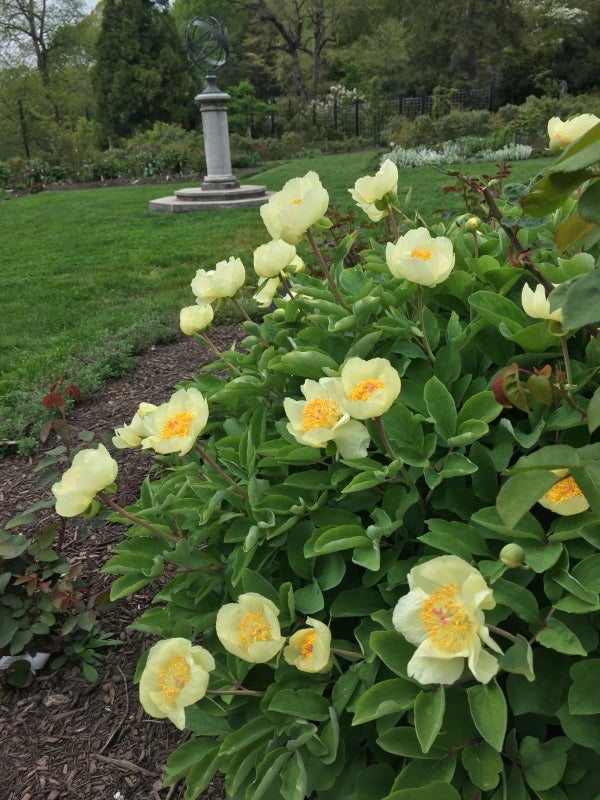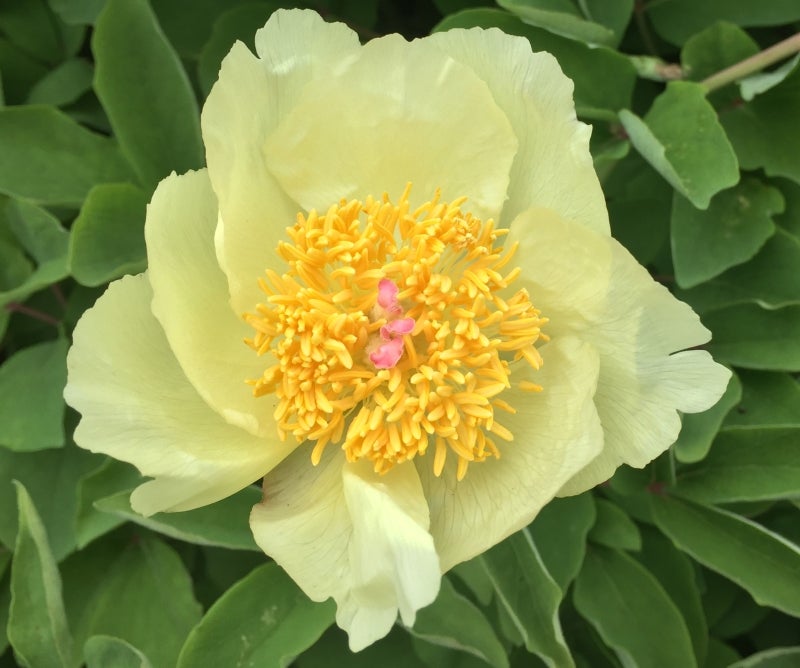Blog



As horticulturists, some would say we speak in a foreign tongue…botanical Latin. Sometimes the botanical names are fun to say, as in the case of the dawn-redwood, Metasequoia glyptostroboides. Once you learn how to pronounce this mouthful of letters, it just sort of rolls off the tongue rather liltingly—meh-tuh-suh-koy-uh glip-toe-stro-boy-deez.
Then there are the plants with stupefyingly difficult names to pronounce, like Paeonia mlokosewitschii. Unless you are a native Polish speaker, it is difficult to enunciate the botanical name of the Caucasian peony. Most of us simply refer to this plant as Molly the Witch.
As the common name suggests, this peony is native to the Caucasus regions. In her native range, Molly the Witch grows in open woodland meadows and at higher elevations. She is often found on rocky ground fighting it out with grasses, dog roses, and scrubby oaks. Despite the trying conditions in the wild, this plant is right at home in our Philadelphia garden. Here at the Morris we grow this plant in the Rose Garden in full sun, but it can also take part shade.
This peony is slow to grow, and it takes patience and persistence to really appreciate this plant. This beauty grows with methodical, measured persistence. The older the plant gets, the more flowers it produces. Over time the plant will form a large, mounded clump up to two feet tall and equally as wide. The patient gardener will be rewarded, as there is no better yellow-flowered peony than Molly the Witch. In early April this peony awakens and pushes its glaucous grey-green leaves into the sunlight. The sturdy, coarsely pinnate leaves stand at attention all by themselves without the need for the caging required of other herbaceous peonies. By late April, fat buds begin to appear atop the fully expanded leaves and open to reveal exquisite flowers. Each blossom has a ring of pristine lemony flower petals surrounding a central core of butterscotch stamens with a tiny pink grapefruit-colored stigma at the very center. It literally looks good enough to eat.

Part of the beauty of Molly the Witch is found in the innocence of the flowers. This is an unadulterated form. No hybridizers have inbred these plants to transmute the stamens into extra petals creating a top-heavy pincushion that needs to be gusseted up to keep them out of the mud. Molly the Witch is the purest form, created the way nature intended: modest, elegant, unblemished, and sturdy enough to stand on her own.
The singular drawback to this peony is that it flowers only once a year. That puts it in the league of one-hit wonders with Rick Astley, Baha Men, and Vanilla Ice. However, unlike a musical flash-in-the-pan, Molly the Witch makes a triumphant comeback tour every April. The flowering of this peony is one of those sparkling moments in the garden that we look forward to. Winter is completely behind us. Spring is fully ensconced, and the garden is bounding into beauty. Right there, at the intersection of all that is glorious about springtime, is the simple beauty of the flower with the unpronounceable name: Paeonia mlokosewitschii.